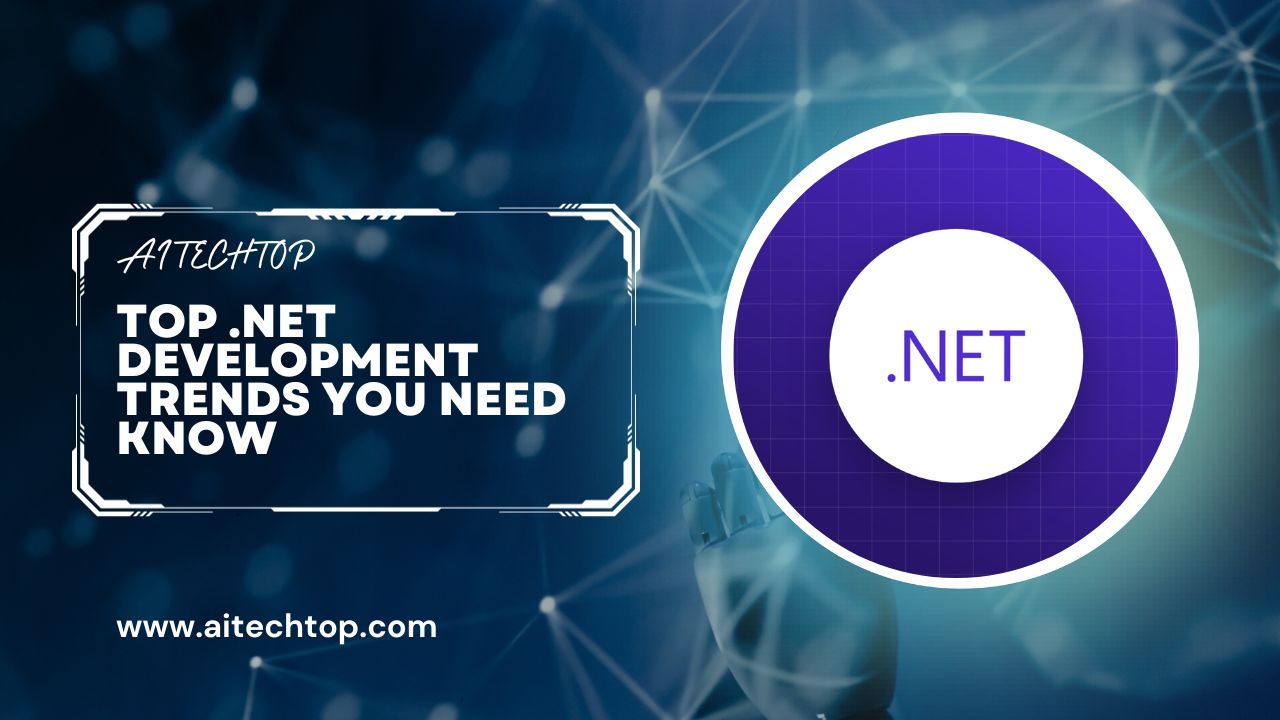In the ever-evolving world of technology, staying up-to-date with the latest trends and developments is crucial for .NET developers and businesses alike. With 2023 on the horizon, it’s time to explore the top .NET development trends that are set to shape the future of software development. From machine learning to IoT networks and everything in between, this post will guide you through the trends that are reshaping the .NET landscape.
1. ML.NET: Empowering Intelligent Applications
ML.NET, Microsoft’s open-source machine learning framework, is taking the .NET world by storm. In 2023, it’s expected to play a pivotal role in building intelligent applications. With ML.NET, developers can harness the power of machine learning to automate tasks, make predictions, and continuously improve their applications.
2. .NET Game Development: A New Era
Game development has found a new home in the .NET ecosystem, thanks to Unity’s full support for .NET. This exciting trend allows developers to utilize their C# skills to create high-quality games for various platforms, including Windows, macOS, Linux, Android, and iOS. The fusion of .NET and game development opens up new horizons for innovation.
3. .NET MAUI: Building Native Apps for All Platforms
.NET Multi-platform App UI (MAUI) is the game-changer for 2023. It enables developers to build native apps for multiple platforms, such as Windows, macOS, Linux, Android, and iOS, all from a single codebase. This simplifies the development process and enhances the user experience on diverse devices.
4. Web-Based Apps Using .NET: ASP.NET Core Excellence
ASP.NET Core continues to shine as a modern, lightweight, and scalable web framework. In 2023, we can expect a surge in web-based applications developed using .NET. These applications range from simple websites to complex single-page applications, making .NET a versatile choice for web developers.
5. ASP.NET Core Blazor PWAs: Next-Gen Web Apps
The future belongs to Progressive Web Applications (PWAs), and ASP.NET Core Blazor is leading the way. Blazor allows developers to build web apps using C# and empowers them to create PWAs that provide a seamless user experience, even offline. Expect to see more businesses adopting this technology in 2023.
6. .NET for IoT Networks: Connecting the World
The Internet of Things (IoT) is expanding rapidly, and .NET is at the forefront of IoT application development. In 2023, .NET IoT Core will be essential for building efficient and lightweight IoT applications, connecting devices and revolutionizing various industries.
7. Xamarin .NET Development: Unifying Mobile App Development
Xamarin, a cross-platform development framework, remains a go-to choice for developers in 2023. It empowers them to build native apps for Android, iOS, and Windows from a single codebase, making mobile app development more efficient and cost-effective.
8. Advancement in .NET Security: Protecting Your Apps
With the ever-present cybersecurity threats, Microsoft is committed to enhancing .NET security. In 2023, we can anticipate the introduction of even more robust security features and improvements to protect .NET applications from vulnerabilities and attacks.
9. Docker Support for ASP.NET Core PWAs: Streamlined Deployment
Deploying ASP.NET Core Progressive Web Applications is becoming easier with Docker support. This technology allows developers to package and deploy their applications within containers, providing an efficient and scalable solution for production environments.
10. Azure Cloud for .NET Applications: The Power of the Cloud
Microsoft Azure, a leading cloud computing platform, offers a plethora of services for .NET developers. Azure is set to become an even more popular choice for hosting, deploying, and managing .NET applications in 2023, harnessing the scalability and flexibility of the cloud.
Conclusion: Top .NET development trends you need know.
The .NET development landscape in 2023 is teeming with exciting possibilities. From harnessing the potential of ML.NET for intelligent applications to the unification of mobile app development with Xamarin and the efficiency of Docker containerization, the trends in .NET development are diverse and forward-looking.
Whether you’re a developer, a business owner, or an IT enthusiast, keeping an eye on these trends can help you stay ahead in the dynamic world of software development. Embrace the power of .NET and embark on a journey of innovation in 2023.
Website Redesign: The Ultimate Guide to Preventing Data Loss During Website Redesign
1. FAQ: What is machine learning, and how does it relate to artificial intelligence (AI)?
Answer: Machine learning is a subset of artificial intelligence (AI) that focuses on developing algorithms and models that allow computers to learn and make predictions or decisions based on data. In other words, machine learning enables machines to improve their performance on a specific task through experience, without being explicitly programmed. AI, on the other hand, is a broader concept that encompasses any technique or system that can mimic human intelligence, which includes machine learning as one of its subfields.
2. FAQ: What is the Internet of Things (IoT), and how does it work?
Answer: The Internet of Things (IoT) refers to the network of physical objects, devices, and sensors that are interconnected and can exchange data with each other and central systems via the internet. IoT devices collect and transmit data, enabling real-time monitoring, analysis, and control. These devices can range from everyday objects like thermostats and smartwatches to industrial machines and autonomous vehicles. IoT works by connecting these devices to the internet, allowing them to communicate and share data, which can be processed and utilized for various applications.
3. FAQ: What is cloud computing, and what are the advantages of using cloud services?
Answer: Cloud computing is a technology that provides access to computing resources and services, such as servers, storage, databases, networking, software, and analytics, over the internet (the “cloud”). Cloud services are hosted and maintained by cloud providers like Amazon Web Services (AWS), Microsoft Azure, and Google Cloud. The advantages of using cloud services include cost-efficiency, scalability, flexibility, accessibility from anywhere, automatic updates, and reduced IT maintenance. Businesses and individuals can use cloud computing to run applications, store data, and manage workloads without the need for extensive in-house infrastructure.
